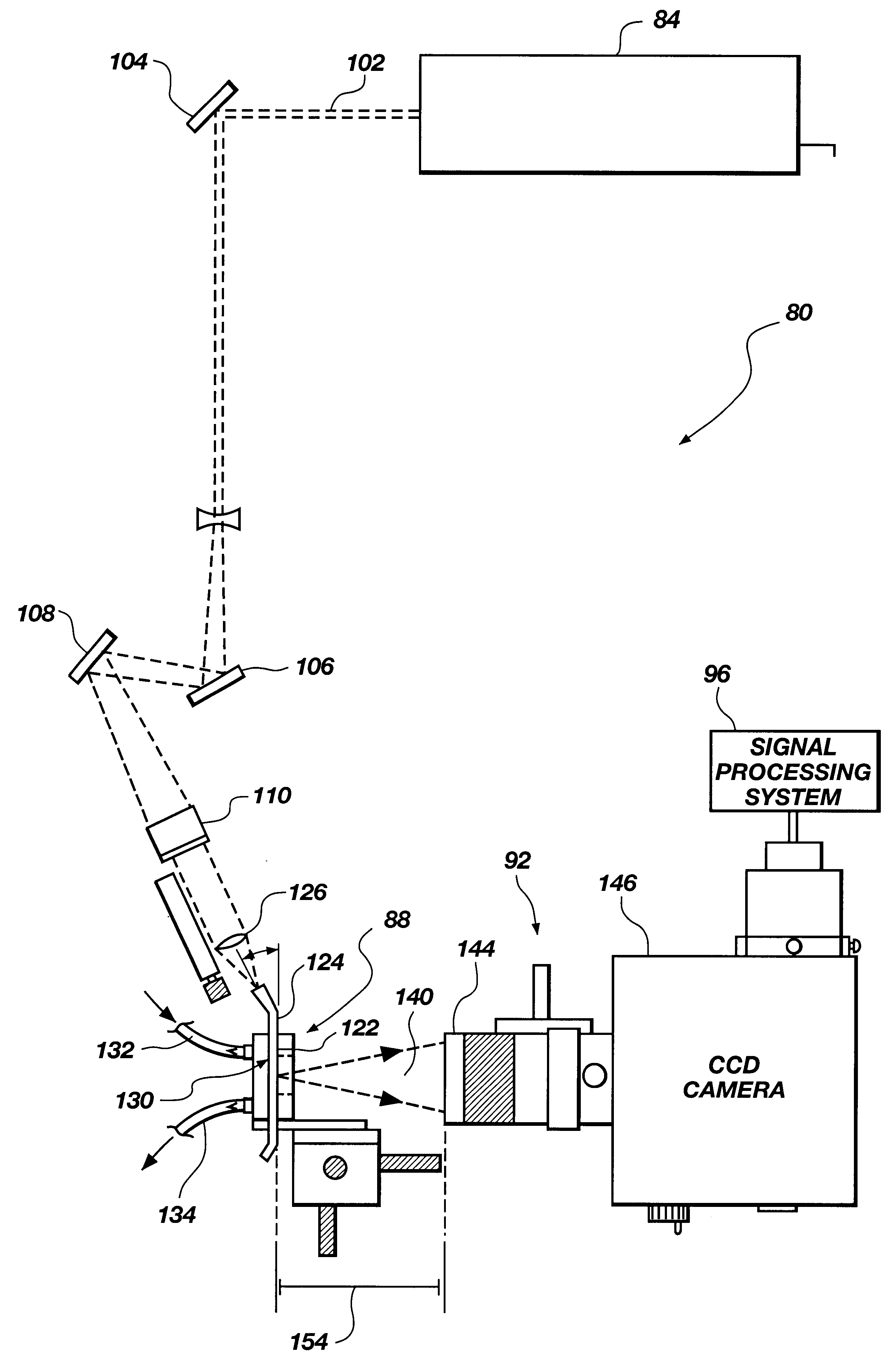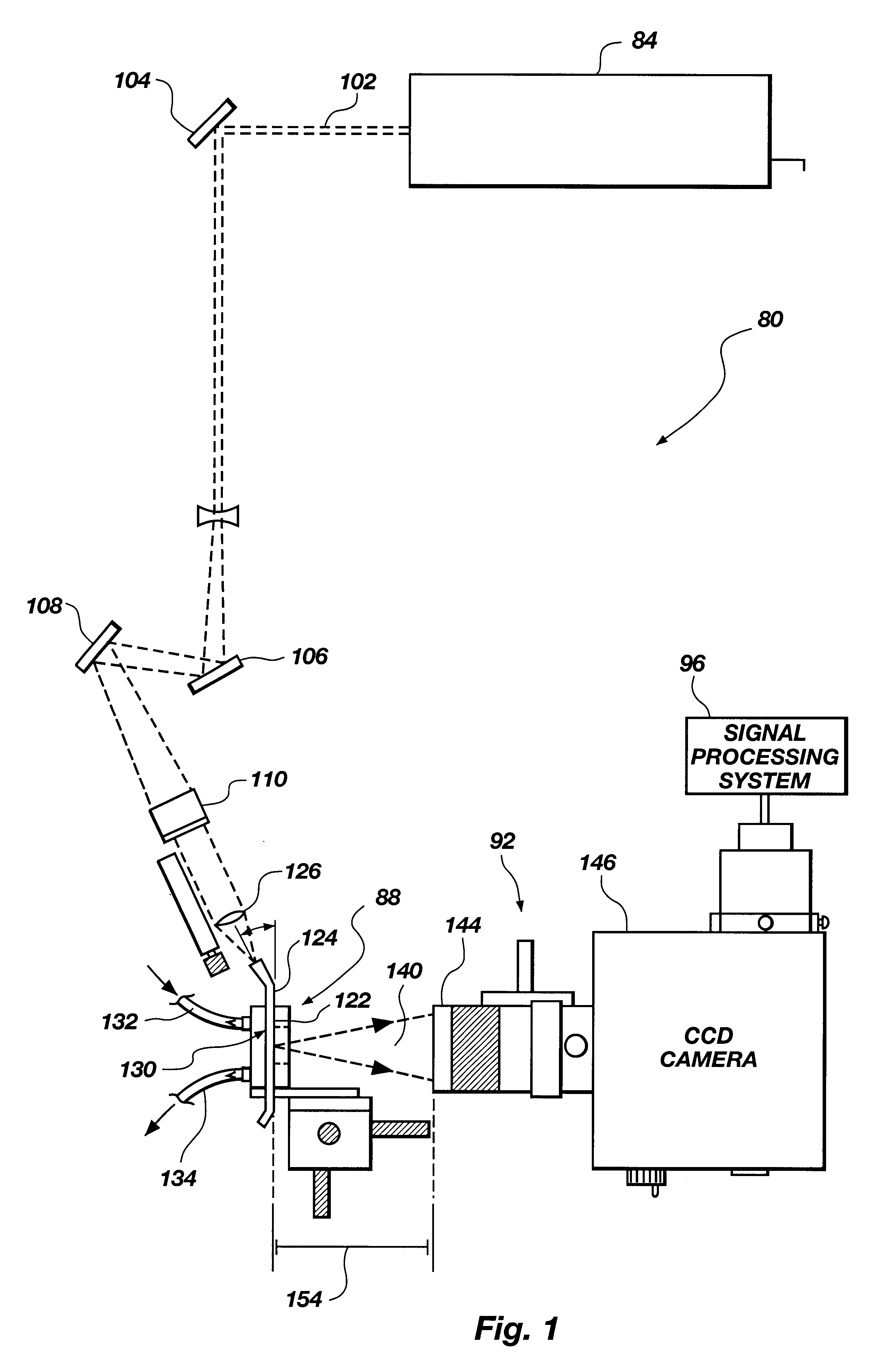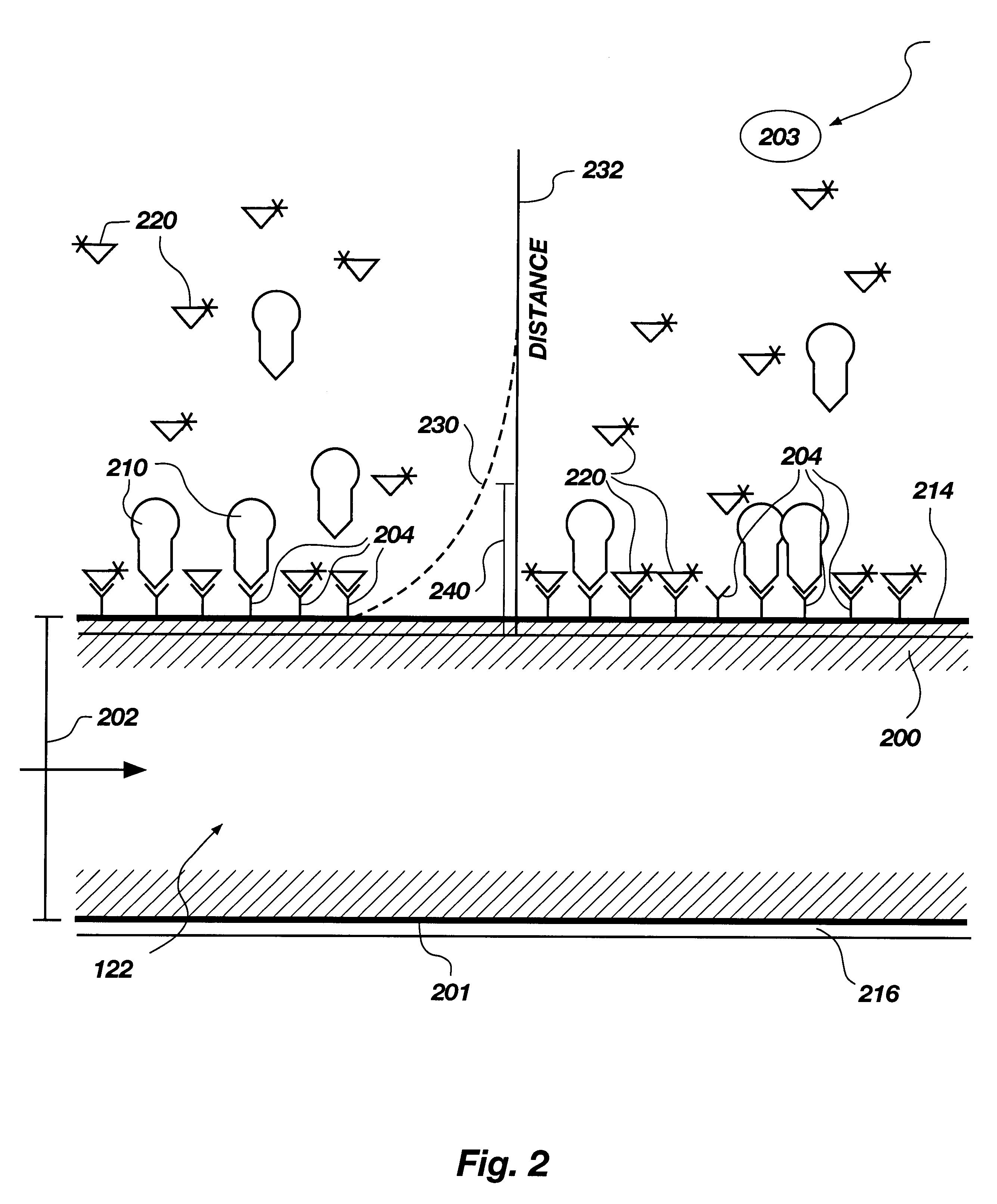System for determining analyte concentration
a technology of analyte concentration and system, applied in the direction of fluorescence/phosphorescence, material analysis, instruments, etc., can solve the problems of difficult to build a multi-well biosensor, tedious washing step, and part of the technician
- Summary
- Abstract
- Description
- Claims
- Application Information
AI Technical Summary
Benefits of technology
Problems solved by technology
Method used
Image
Examples
Embodiment Construction
Referring to FIG. 1, a biosensing system, generally 80, includes a light source 84, a biosensor 88, and an optical detection system 92. As used herein, the term "light" refers to electromagnetic radiation, and is not limited to the visible spectrum. Biosensor 88 contains an assay that emits fluorescence when excited by light from light source 84 depending on whether or not analyte is present in a liquid sample being analyzed in the biosensor. The fluorescence is detected by an optical detection system 92. Biosensing system 80 may further include a signal processing system 96 that analyzes signals from optical detection system 92.
A. Overview of System Components
In one embodiment, light source 84 is a laser that produces a light beam 102 that is directed by means of mirrors 104, 106, and 108 to biosensor 88. A 45.degree. angle mirror 110 may be positioned for making beam 102 a vertical beam prior to focussing the beam onto biosensor 88.
Biosensor 88 includes an optical substrate or wav...
PUM
 Login to View More
Login to View More Abstract
Description
Claims
Application Information
 Login to View More
Login to View More - R&D
- Intellectual Property
- Life Sciences
- Materials
- Tech Scout
- Unparalleled Data Quality
- Higher Quality Content
- 60% Fewer Hallucinations
Browse by: Latest US Patents, China's latest patents, Technical Efficacy Thesaurus, Application Domain, Technology Topic, Popular Technical Reports.
© 2025 PatSnap. All rights reserved.Legal|Privacy policy|Modern Slavery Act Transparency Statement|Sitemap|About US| Contact US: help@patsnap.com



